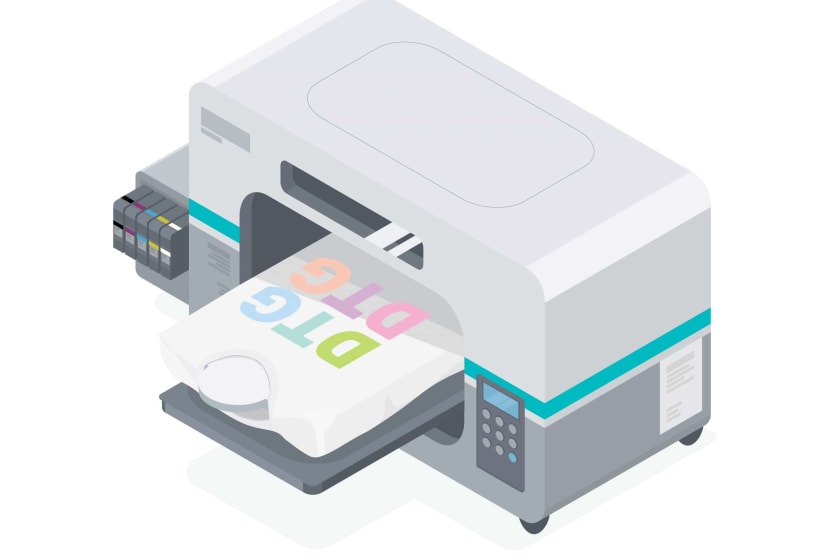Is Digital Printing Less Or More Wasteful?



There are loads of documents in almost every part of our lives - from work documents and college papers to restaurant menus and tourist information brochures. We print out these documents, use them, discard them, and sometimes recycle them. If not, we simply dispose of them.
The digital printing industry has revolutionised the printing industry for a long time. It has, in particular, made printing more environmentally friendly. By choosing to go digital, you're also choosing to contribute to the preservation of the environment due to the many benefits it provides. Businesses, groups and organisations of all kinds can make use of digital printing to print a variety of documents. We often receive questions about the environmental impact of both digital and offset printing, as more consumers worry about their carbon footprints and the environment's fragility.
Since direct mail marketers are responsible for creating the products and services we sell, we must reduce our environmental impact. To achieve high-quality, effective mail campaigns while reducing waste, maximising materials, and lowering energy consumption, we must find the best possible ways. With more and more people seeking eco-friendly brands and retailers, brand owners are often stuck deciding where to start when establishing their sustainability goals. Major brands such as Nestlé and General Mills are working on more sustainable packaging and implementing regenerative farming methods to reduce greenhouse gas emissions. There are many sustainable packaging options available when it comes to flexible packaging.
Many sustainable packaging options are available for brand owners, including recyclable, post-consumer recycled, or compostable packaging. Alternatively, packaging manufacturers can offer digital print, inherently more environmentally friendly. Some firms even offer both digital and offset printing.
It's common knowledge that printing requires paper or another substrate to be printed on. At the same time, digital printing does not need as much raw material as traditional printing does. Particularly, digital printing eliminates the need for bespoke printing plates and the need for them to be disposed of after use. Almost no waste is produced due to digital printing because there is no complex setup required to place the ink on the paper. By choosing to print on recycled paper, you reduce the raw materials needed. Environmental impacts are reduced when fewer materials are used.
Let’s take a look at the environmental benefits of digital printing:
- Prevention/Reduction of Waste - Although online printing requires paper, it wastes less than conventional printing. A traditional printer will always run with a waste of up to 15%, which means 15 per cent will be discarded for every order placed. The reduction in wastage is up to 5% by switching to digital printers, which do not require any setup and use electronic charges to print. The use of recycled papers can further reduce waste.
- Quality - Whenever you print online, the print quality will be excellent. The colours will print vibrantly as you want. You can control the shades, hues, and lines to the degree you want. You also keep the print quality consistent from your first to last copy.
- Reduced Costs - Printing with digital technology reduces the overall cost of printing. With digital printing, no new plates are needed, unlike conventional printing. Normally, all of these factors reduce printing costs, especially when printing small volumes. Therefore, marketing materials such as brochures, flyers, business cards and forms can be printed easily. Plus, it will be as viable to print in colour as it would be to print in black and white. Furthermore, you can alter the size of your documents, which helps reduce the amount of waste.
- Ability to Send and Approve Proofs Electronically - Getting a press proof in conventional printing involves setting up a job, making plates, stringing paper through a press, printing on them, and cutting the printed pieces down to size. For business cards or other documents, it used to take a lot of work and now, thanks to online printing, you can know how your final product will look without needing to print it out. It serves as both an economical and time-saving option. It's not always possible to press proof items, especially when testing a new ink colour or special material. It's not always possible to press proof items, especially when testing out a new ink colour or a special material. By proving these documents, you can be certain that they meet design expectations. Fortunately, digital printing doesn't require that you print several documents. You can use a single document to check all these features. In this way, it is less wasteful than traditional printing.
- Uses Less Toxic Chemicals - Chemicals are used in conventional printing to produce each piece. You will need a darker room if you want to make plates, which are either rubber or polyester. In addition to the right solvents, you'll also need the right tools for removing ink from specific rollers. This can lead to water contamination if these solvents are in contact with it.
- Print Flexibility - In a business, you have lots of printing requirements related to marketing. Each goal is the same: to test a particular product and get to a specific market. Consequently, they must be customised to make them fit the target market. Short-run content is in demand for this reason. This would not be possible with traditional printing techniques, but online printing does. The master is not engraved with the information to be printed.
- Speed - By reducing the number of steps and simplifying the printing process, online printing is quicker, and it does not involve a complex setup like traditional printing. Because business printing generally involves retail quantity and volume, you can place your order and get it the next day. If you used conventional techniques, you would spend more time and money on printing.
- It does not emit Cancer-causing VOCs - In traditional printing emissions, Volatile Organic Compounds (VOCs) are frequently released. These VOCs can irritate the eyes, nose, and throat, cause difficulty breathing and nausea, and damage the nervous system and other organs. Some VOCs are cancerous. Since water-based inks are used in digital printing, the Environmental Protection Agency (EPA) explains that there are no emissions and no VOCs are produced.
- Prototyping - Almost all businesses experience the same problem with their first orders, which are all small. Printing small quantities of paper is cost-prohibitive and untenable using traditional printing methods. They want to determine what works and doesn't work for their business. But businesses do not need costly printing options. With digital printing, you can do prototyping much faster and much lower cost. Additionally, you can operate your printing system or hire a commercial printer to do the job. Experts can handle the task for you, saving you the headaches of maintaining your system.
- Won’t have wasted inventory - Printing digitally is both fast and flexible, so you won't need to print excess inventory ahead of time. This saves you the hassle of throwing out hundreds of thousands of unusable papers. In addition to helping the environment, this also benefits your bottom line.
How do lower the environmental impact of Digital Printing?
Digital printing has a relatively low environmental impact, but you can take some steps to minimise it even further. Choosing the right size of paper or card stock is critical before creating a piece for printing. It is possible to reduce waste significantly by adapting the piece's size to the size of the stock that you have available. Saving waste and costs can also be achieved by avoiding bleeds. As digital printing is ideal for short runs - and short notice - don't print more than you need. Before submitting your design to the printer, make sure you haven't missed anything and will not need to correct it later. Provide digital copies of your materials to recipients who prefer digital over hard copies whenever possible. Print your materials on recycled paper whenever possible. In addition to avoiding inks that make the finished product hard to recycle when its life span has expired, you can also avoid using digital printers.
Conclusion
In summary, digital printing aligns your sustainability goals rather than requiring a complete brand overhaul, a great benefit to any small to medium-sized business. Investing in digital printing is an effective way to cut down on waste and time. The ordering process will be easier and more money will be available in your business because less inventory will be held. Plus, digital printing has a significantly smaller carbon footprint than analogue, or conventional, printing, as it consumes less energy, produces less waste, and uses less energy in general. Printing digitally is the most environmentally friendly method of creating flexible packaging.
The environmental impact of digital printing is positive. Traditional printing generates more chemical waste and physical waste than digital printing. Therefore, in addition to its high quality and reliability, online printing also has an eco-friendly component.
Connect with Fashinza to ease your manufacturing process. We’ll make your manufacturing and supply delivery smooth like butter. Just place an order and see your collection appear!



















